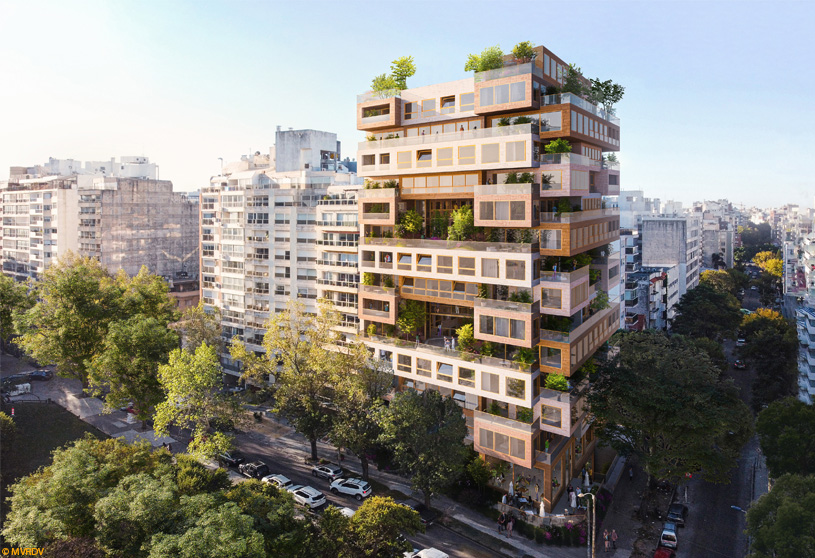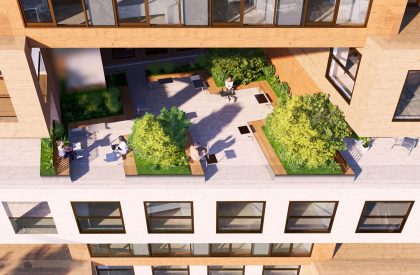Excerpt: Ziel, a residential building designed by MVRDV, comprises a loosely-stacked series of individual homes, where the design is open and porous, allowing light and air to permeate the entire building and creating plenty of open and green spaces for residents of all ages to enjoy and share. The design uses a courtyard to ensure that every apartment gets adequate light, and extends the greenery of the park throughout the structure, from the courtyard to the private terraces and shared patios on various levels.
Project Description
[Text as submitted by architect] Green, social, and porous: MVRDV’s residential building in Montevideo brings family homes to a dense neighbourhood
The construction permit for MVRDV’s 15-storey residential building in Montevideo, Uruguay has been approved. Comprising a loosely-stacked series of individual homes, the design is open and porous, allowing light and air to permeate the entire building and creating plenty of open and green spaces for residents of all ages to enjoy and share. Named Ziel, the project – designed for developer IXOU, in collaboration with executive architect Monoblock – is MVRDV’s first in Uruguay.
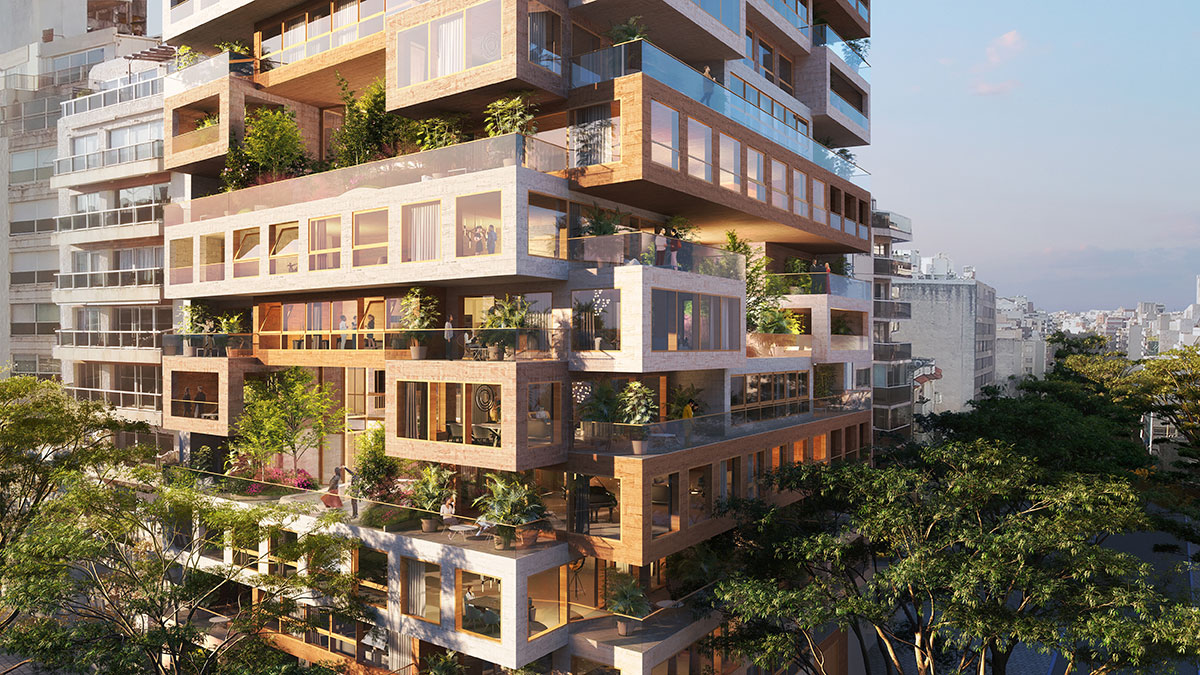
Located just a block from the ocean on the southern tip of Montevideo, the project occupies a corner lot next to the Villa Biarritz park, which serves as a green heart for the dense Punta Carretas neighbourhood. Thanks to the deep plot and the blind walls of the neighbouring buildings, the design uses a courtyard to ensure that every apartment gets adequate light, and extends the greenery of the park throughout the structure, from the courtyard to the private terraces and shared patios on various levels.
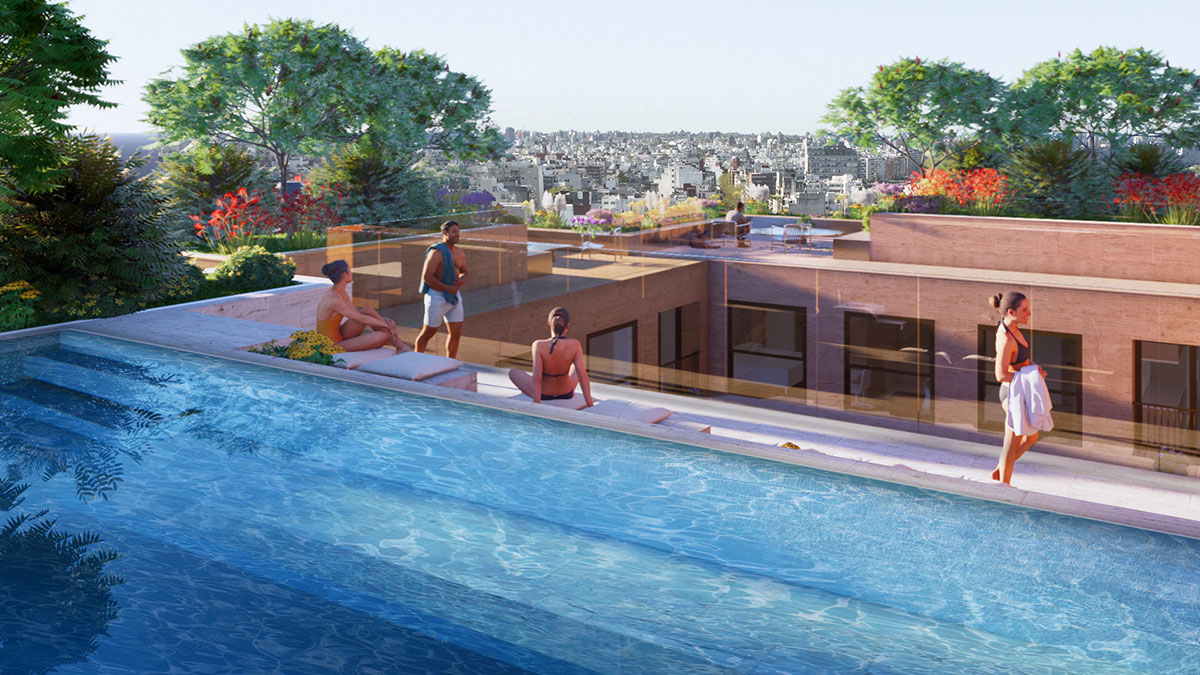
With this abundant outdoor green space, the project is envisaged as a stack of country villas embedded in the dense city. Each apartment has a generous balcony or loggia, and the shifting floorplans mean that the 40 homes include a total of ten unique layouts – mostly three bedrooms, as well as one two-bedroom unit on the first floor and four large, four- bedroom corner apartments on the upper levels.
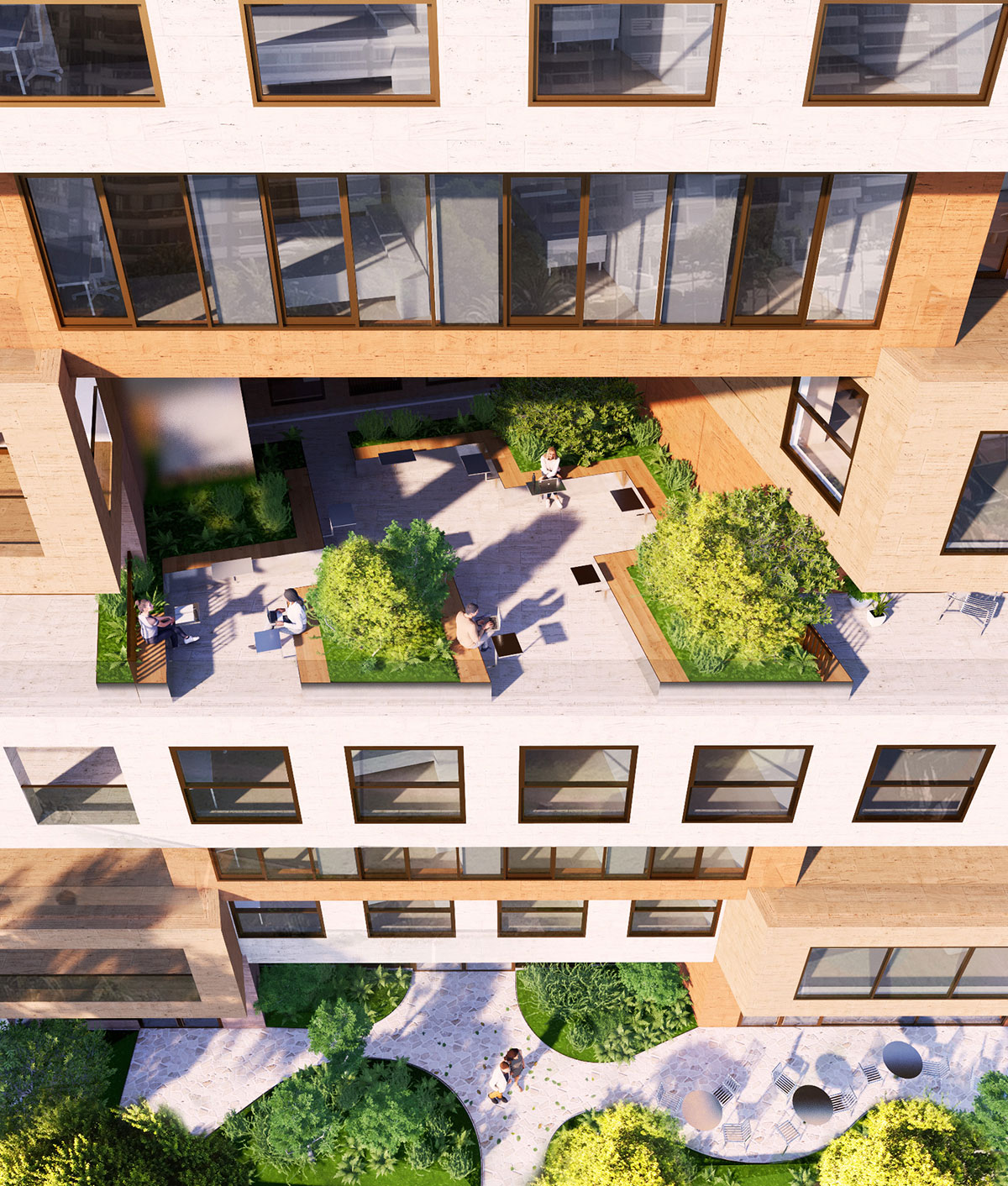
In Montevideo, like in many other cities, it’s common that once people start a family, they leave – buying a villa in the countryside and reducing the vitality of the city”, says MVRDV founding partner Jacob van Rijs. “What if we were able to give them the villa they want, and keep them in the city at the same time, offering a combination of urban and suburban lifestyle? Here, we attempt to give a prototypical solution to combine the two.”
“With our design, we wanted to show that you can have the spaciousness and nature of the countryside on the tenth floor in the middle of the city”, adds MVRDV partner Frans de Witte. “We believe the city should be for everyone, including families with children.”
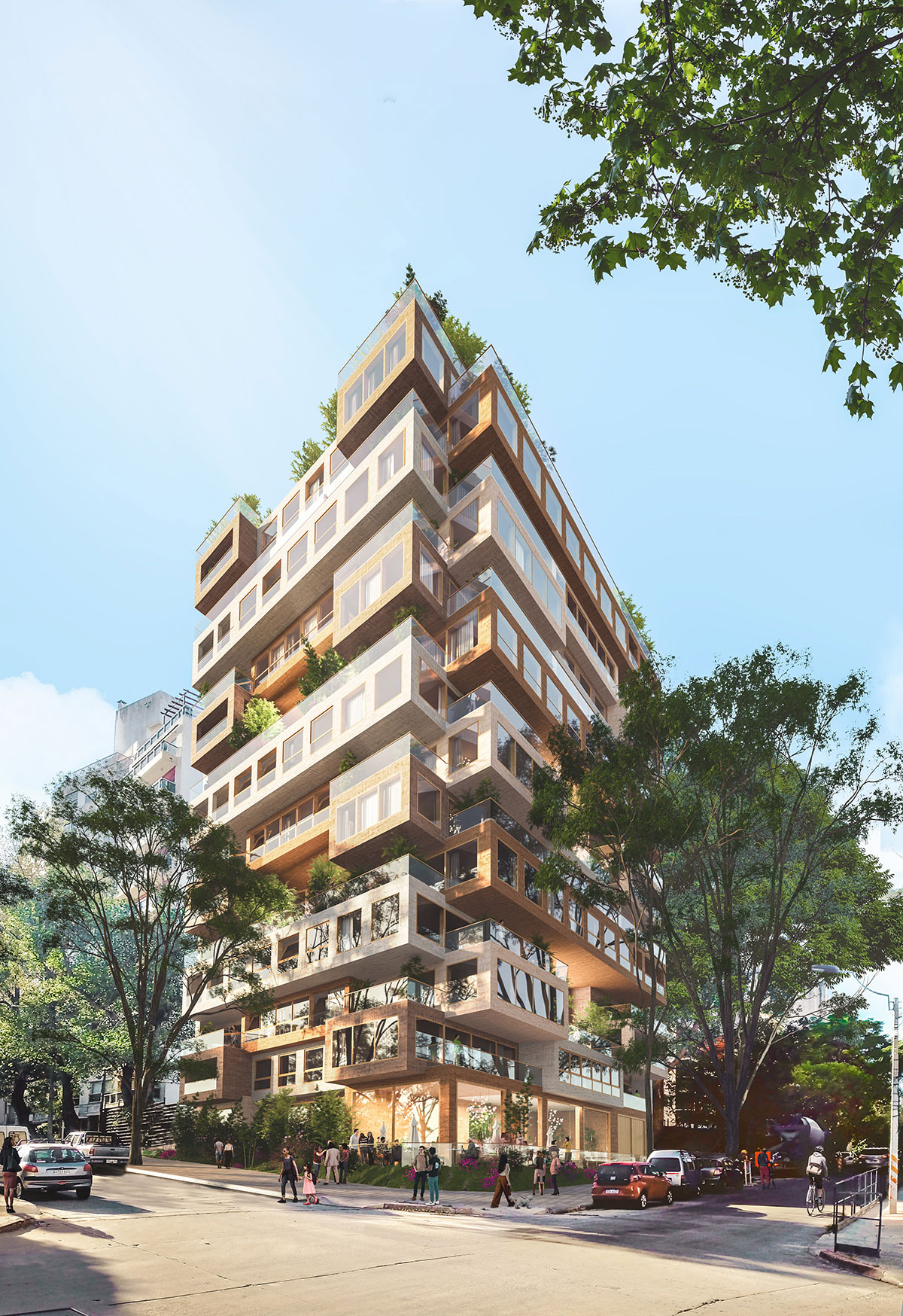
On the second, fourth, sixth, and eighth floors are patios shared by all the residents of the building, which each create a two-storey open space connecting the street and the courtyard. Filled with plants, these patios help to bring light and fresh air to the deep courtyard, and add visual interest – both for the residents in the inner apartments, who get a view beyond the courtyard, and for pedestrians who see to the inside of the building. These “sky gardens” will share a common language, but each will have a unique character and programme, providing users with spaces for different kinds of activities and unobstructed views of the ocean to the East.
Residents will also benefit from a wide array of amenities, from a lounge and dining room on the roof, where a shared terrace with lush landscaping and a swimming pool are also located, to a gym and spa in the lower levels. Located prominently on the ground floor corner will be a restaurant that further contributes to the vibrancy of the neighbourhood.

This stack of individual villas is envisioned as a series of stone blocks in various different but complementary colours, creating a harmonious palette of warm, earthy tones. The four different types of stone used in the façade helps to differentiate each apartment as its own independent entity, while bronze window frames help to tie together the exterior finishes.

The design of the building targets LEED-Platinum certification. To reduce energy use, the building’s many overhangs limit solar gain, while the porosity of the structure means that apartments can be easily cooled using natural ventilation. Solar panels on the roof contribute towards the energy that the building does use. Meanwhile, the greenery throughout the building helps to improve the biodiversity of the neighbourhood, and a water capture and retention system, which also feeds into the irrigation for the building’s greenery, reduces the building’s impact on the local environment.
